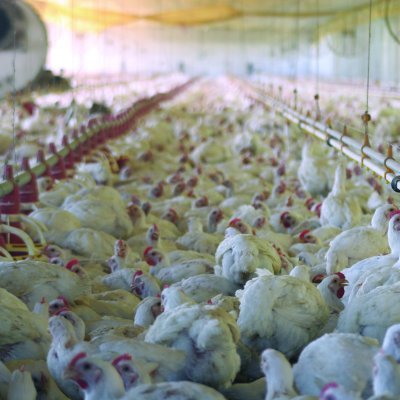Crypto-program - prevention of endoparasites of Eimeria genus
Crypto-program - prevention of endoparasites of Eimeria genus

The diseases caused by intestinal parasites of the Eimeria genus tend to have a latent and often severe course in poultry fattening, especially in immunosuppressive individuals and young animals. Their treatment is complex and costly. It is also not very effective when compared with prevention.
These species belong among smallest unicellular parasites of mammals and birds. In external environment, their oocysts even rank second in the world, as to their resistance. They are not only resistant to adverse environmental influences, but they are also not enough sensitive to commonly used disinfectants.
They are transmitted most often by contaminated water, feedstuff and regularly also by environment. In the case of free ranges in the vicinity of fields, forests and watercourses, also by direct contact with infected wild animals or faeces of infected individuals. Exceptionally, they can be transmitted passively, but in subliminal doses. The infectious dose for these single-species endoparasites is usually 50,000 OPG (oocysts per gram of faeces). But the oocysts detected in contaminated farms reach over 200,000 OPG!/p>
Infectious diseases caused by these endoparasites occur mainly in environments with low level of hygiene or where sanitation is not performed regularly. When acute infection outbreaks, it is necessary to initiate treatment immediately and to add anticoccidials, but also to decontaminate the environment. In the near future, the use of anticoccidials will be limited because of AMR control. However, resistant oocysts cannot be destroyed in the environment in the presence of animals.
Based on the testing of the national parasitological laboratory APHA UK (2016-2018), several field applications were carried out in the Czech Republic, resulting in a special Crypto-program, that leads to significant reduction and inactivation of oocysts in the environment of halls and runs, followed by improved flock health and improved efficacy of anticoccidials used.
Besides to the destructive use of strong caustic at 60°C or flame burning, there are two basic procedures for effectively eliminating Eimeria oocysts in an environment with incomparably lower risks and higher efficiency. Each of them has certain benefits:
1. When there is a lower endoparasite load in the poultry hall, we recommend the combination of two preparations:(washing) and (disinfection)
- target organisms: Eimeria tenella, E. maxima, E. acervulina, bacteria, fungi and their spores, viruses.
- Efficiency from 10°C, hard water WHO, mild org. contamination, at 300ml of solution per m2.
|
Combination of preparations |
Dilution |
Exposure time |
Efficiency against oocysts (lysis) |
||
|
Combination of both |
The product alone |
Check |
|||
|
SHIFTTM |
1:50 (300 ml/m2) |
30 min |
90,18 % |
17,50 % |
0,00 % |
|
GPC8TM |
1:35 (300 ml/m2) |
120 min |
78,00 % |
0,00 % |
|
- When there is a high load in poultry halls and also runs, we recommend the combination of two preparations: TARGET POWERGEL (washing) and GPC8 (disinfection):
- target organisms: Eimeria tenella, E. maxima, E. acervulina, Tyzzeria, Cryptosporidium, Isospora spp., bacteria, fungi, spores, viruses.
- Efficiency from 10°C, hard water WHO, high organic contamination, 300ml of solution per m2.
|
Kombinace přípravků |
Ředění (dávka roztoku) |
Doba expozice |
Účinnost proti oocystám (lýza) |
||
|
Kombinace obou |
Pouze produkt |
Kontrola |
|||
|
TARGETTM POWERGEL |
1:14 (300 ml/m2) |
30 min |
98,24 % |
47,00 % |
0,00 % |
|
GPC8TM |
1:35 (300 ml/m2) |
120 min |
78,00 % |
0,00 % |
|
Upon request, our specialists will perform a free analysis of your holding, draw up an individual Crypto-program (in-vitro) and train your staff or group responsible for zoohygiene.